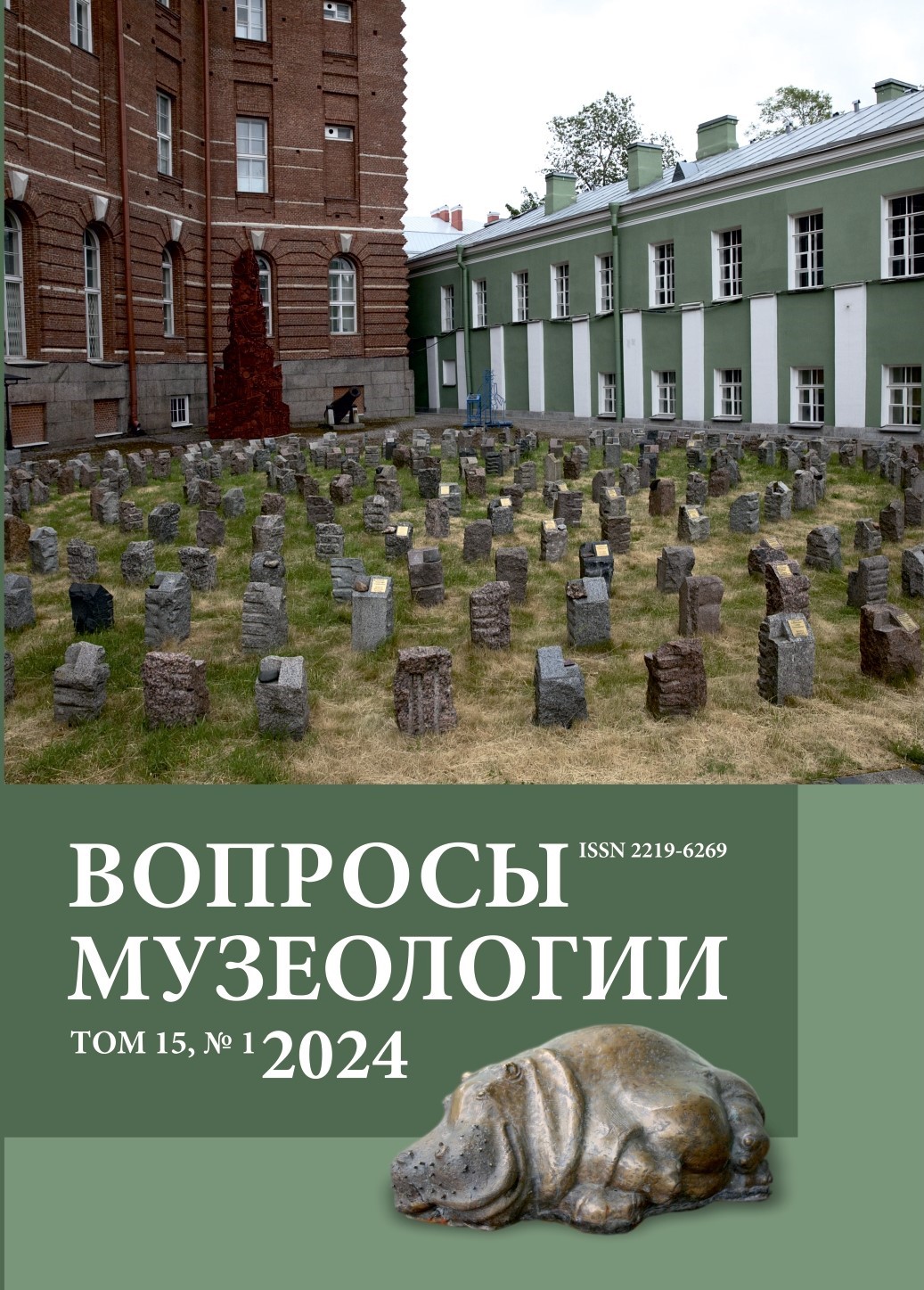“Highly expressive manual on Russian history”: Branch projects of the Historical and Everyday life Department of the State Russian Museum (1925–1930)
DOI:
https://doi.org/10.21638/spbu27.2024.102Abstract
In 1918–1934 the State Russian Museum included the Historical and Everyday life Department. It was a unique example of a museum of everyday life, the researchers studied by purposeful selection, exhibiting and actualization the collection, looking for a conceptual basis for their activities. The success of the work was proved by the network of branches that developed in 1925–1930 around the Department, which made it the largest museum of everyday life in the country. Which included the Sheremetevsky and Menshikovsky palaces, the Summer Palace and the house of Peter I, the estates Maryino and Gruzino, whose history has developed in different ways. There were also several projects supervised by the research staff of the Historical and Everyday life Department. The first project was aimed at creating a historical church museum based on the collections united by the “Old Petersburg” Society and then forming the basis of the Museum of the Obsolescent Cult that existed in 1923–1927. The second project involved the organization department of a military of everyday life in the State Russian Museum based on the collections of the Quartermaster, Suvorov, and regimental museums. There were also plans to organize a unified museum of the time of Peter the Great, which was supposed to be in the Menshikov or Summer Palaces. These projects could only be developed in the 1920s, when museums assumed the possibility of experimentation, and were driven by attempts to protect collections. The First All-Russian Museum Congress in 1930 officially completed the development of museums of everyday life in the country. In 1934, the Department of History and Everyday life became part of the State Museum of the Revolution, in 1937, of the State Museum of Ethnography, and in 1941 became the basis for the creation of the Department of the History of Russian Culture in the State Hermitage.
Keywords:
museums of everyday life, Historical and Everyday life Department, Russian Museum, Quartermaster’s Museum, Military Museums Section, military museums of everyday life, M. D. Priselkov, G. S. Gabaev
Downloads
References
Литература
Ананьев В. Г. 2018. Музей отживающего культа (1923–1927): история создания и пути формирования коллекции. Вестник Томского государственного университета. История 432: 57–64. https://doi.org/10.17223/15617793/432/7
Андреева О. С. 2017. Музеи во дворце Меншикова после революции 1917 года. Музей и революция 1917 года в России: судьба людей, коллекций, зданий (из цикла «Музей и война»): сб. докл. всерос. конф. (Екатеринбург, 15–17 ноября 2017 г.). 11–15.
Анисимова М. В. 2020. Историко-бытовой отдел Русского музея: формирование, развитие, ликвидация. Исторический журнал: научные исследования 4: 108–117. https://doi.org/10.7256/2454-0609.2020.4.33047
Голлербах Э. 1923. Открытие Историко-бытового отдела Русского музея. Среди коллекционеров 11–12: 45–47.
Закс А. Б. 1962. Историко-бытовой отдел Русского музея. Труды НИИ музееведения 7: 240–285.
References
Ananiev V. G. 2018. The Museum of the Obsolescent Cult (1923–1927): History of creation and main ways of collection formation. Vestnik Tomskogo gosudarstvennogo universiteta. History 432: 57–64. https://doi.org/10.17223/15617793/432/7 (In Russian)
Andreeva O. S. 2017. Museums in the Menshikov Palace After the Revolution of 1917. Muzei i revoliutsia 1917 goda v Rossii: sud’ba liudei, kollektsii, zdanii (iz tsikla “Muzei i voina”): sbornik dokladov Vserossiiskoi konferentsii (Yekaterinburg, 15–17 noiabria 2017 goda). 11–15. (In Russian)
Anisimova M. V. 2020. The Section of History and Everyday life in the Russian Museum: Establishment, Development, and Liquidation. Istoricheskii zhurnal: nauchnye issledovaniia. 4: 108–117. https://doi.org/10.7256/2454-0609.2020.4.33047 (In Russian)
Gollerbach E. 1923. Opening of the Historical and Household Department of the Russian Museum. Sredi kollektsionerov 11–12: 45–47. (In Russian)
Zaks A. B. 1962. Historical and Everyday life Department of the Russian Museum. Trudy NII muzeevedeniia 7: 240–285. (In Russian)
Downloads
Published
How to Cite
Issue
Section
License
Articles of "The Issues of Museology" are open access distributed under the terms of the License Agreement with Saint Petersburg State University, which permits to the authors unrestricted distribution and self-archiving free of charge.




